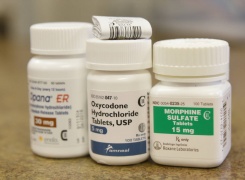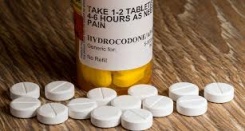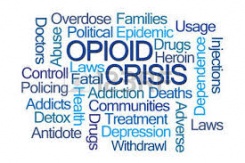Drugs, alcohol, suicide killing more Americans than ever
Maggie Fox
February 23, 2018
“Despair deaths” from drugs, alcohol and suicide have reached new peaks in the U.S. and are not just killing whites, but spiking in communities of color, as well, according to a new report released Thursday.
More than 142,000 Americans died from drug or alcohol overdoses and from suicide in 2016, an 11 percent increase over 2015, the report from the Trust for America’s Health and the Well Being Trustfinds.
The Epidemic of Neonatal Abstinence Syndrome, Historical References of Its’ Origins, Assessment, and Management
Enrique Gomez-Pomar and Loretta P. Finnegan
February 23, 2018
Neonatal abstinence syndrome (NAS) refers to a constellation of signs that are present in some newborn infants resulting from the abrupt cessation of passive transfer of maternal opioids used during pregnancy. The classic NAS refers to infants born to mothers who used opioids during pregnancy, but the term has broadened to include infants whose mothers have used or abused other psychoactive substances during pregnancy that contribute to the expression of the syndrome.
Cost Of U.S. Opioid Epidemic Since 2001 Is $1 Trillion And Climbing
Greg Allen
February 23, 2018
The opioid epidemic has cost the U.S. more than a trillion dollars since 2001, according to a new study, and may exceed another $500 billion over the next three years.
The report by Altarum, a nonprofit group that studies the health economy, examined CDC mortality data through June of last year. The greatest financial cost of the opioid epidemic, according to the report, is in lost earnings and productivity losses to employers. Early deaths and substance abuse disorders also take a toll on local, state and federal government through lost tax revenue.
Opioid use increases risk of serious infections
Craig Boerner
February 23, 2018
Opioid users have a significantly increased risk of infections severe enough to require treatment at the hospital, such as pneumonia and meningitis, as compared to people who don’t use opioids.
The Vanderbilt University Medical Center study, released today (Feb. 11) in the Annals of Internal Medicine, found that people who use opioids have a 1.62 times higher risk of invasive pneumococcal diseases.
Homeless. Addicted to Heroin. About to Give Birth.
JULIA LURIE
February 8, 2018
Of the estimated 5.4 million women who abused opioid painkillers or heroin in 2016, some 26,000 were pregnant. (Both numbers are likely gross underestimates.) These pregnancies, nearly 9 in 10 of which are unplanned, carry major risks for mother and fetus alike. A woman who injects heroin through her pregnancy is significantly more likely than a nonuser to deliver a preterm baby with serious long-term health problems. Those risks diminish markedly if the mom takes medications to treat the addiction, but even so, the babies are often born in withdrawal.
Trump Plan to Move Drug Prevention Program to Justice Dept. Prompts Protests
ALI WATKINS
February 7, 2018
State and local law enforcement officials are fighting a Trump administration proposal to move oversight of a $275 million drug prevention program to the Justice Department, fearing that such a move would steer the country’s drug-fighting strategy toward federal legal crackdowns and away from years of holistic, community-based approaches.
Read more here: https://www.nytimes.com/2018/02/06/us/politics/ondcp-hidta-grants-justice-department.html
Why the United States needs a national drug policy
Stephen Patrick
February 7, 2018
Drug withdrawal in an infant was a rare diagnosis just a few years ago, but today one infant is born every 25 minutes nationwide with the condition, often with tremors, difficulties with eating and sleeping, and lots of irritability. These opioid-withdrawing infants are the youngest warnings of a much larger problem: our friends, family and neighbors are dying from overdoses at a rate we have not seen before.
These are the states where infant mortality is highest
Jacqueline Howard
January 10, 2018
There's good and bad news when it comes to infant mortality in the United States.
Infant mortality, or the death of a baby before his or her 1st birthday, has declined in recent years across the nation and around the world.
Yet disparities persist across states, according to a report released by the Centers for Disease Control and Prevention's National Center for Health Statistics on Thursday.
We mobilized against flu, cancer and heart attacks. Where's the urgency on opioids?
Barry McCaffrey and Jessica Hulsey Nickel
January 10, 2018
Our nation is not yet succeeding in addressing the opioid crisis, as exemplified by the latest drug overdose numbers just released by the Centers for Disease Control and Prevention (CDC). In 2016, we lost more than 63,000 Americans to drug overdoses broadly, an increase of 21% over the previous year.
The other side of the opioid debate: What to do about the pain?
Jeremy Olson
January 10, 2018
Larson and others with severe, chronic pain are counterpoints to a state and nationwide effort to reduce opioid prescribing. First they followed doctors’ orders and became dependent on the drugs. Now they fear losing them.
Read more here: http://www.startribune.com/the-other-side-of-the-opioid-debate/463071143/










